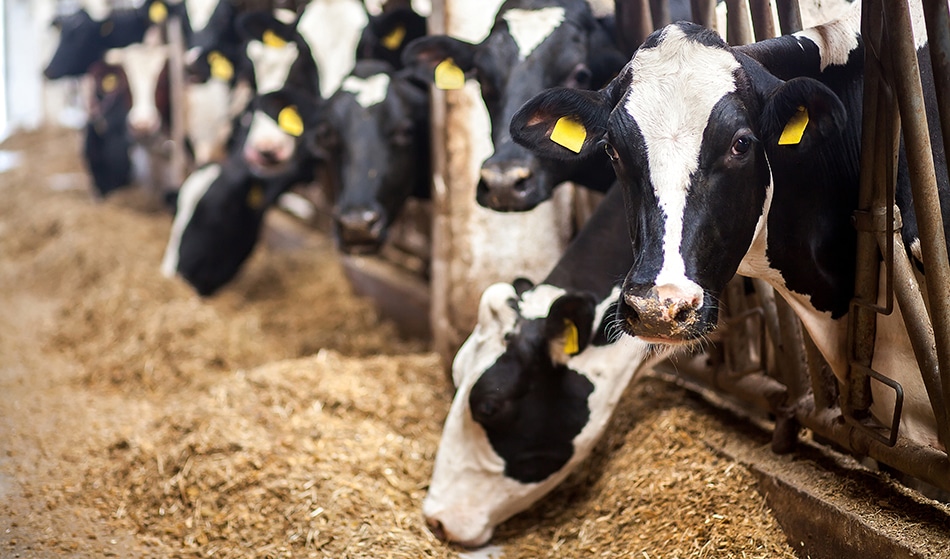EN 12322 Campylobacter Detection in Animal Feed
The detection of Campylobacter species in animal feed is critical to ensuring food safety and the health of livestock. This test, governed by EN 12322, aims at identifying the presence of pathogenic strains that can pose significant risks if ingested by farm animals or humans consuming meat products derived from these animals.
The significance of this standard cannot be overstated in sectors such as agriculture and animal nutrition, where contamination with Campylobacter is a major concern. The bacterium is one of the leading causes of foodborne illness globally, responsible for millions of cases of gastroenteritis each year. By adhering to EN 12322 guidelines, laboratories can provide accurate and reliable results that help mitigate these risks.
The methodology outlined in this standard involves several key steps: sample collection from feed materials, preparation of the samples using appropriate media and techniques, inoculation onto selective growth media, incubation conditions suitable for Campylobacter colonies, and finally, identification based on colonial morphology, biochemical reactions, or molecular methods.
The importance of this test extends beyond just identifying contamination; it also involves understanding the potential impact on animal health. For instance, certain strains like Campylobacter jejuni can cause gastrointestinal distress in animals leading to reduced feed efficiency and growth rates. Thus, ensuring compliance with EN 12322 helps maintain optimal nutritional standards and supports sustainable agricultural practices.
In addition, this test is crucial for regulatory compliance purposes. Authorities worldwide have stringent regulations regarding the safety of animal feeds which must be met before they can enter commercial markets. Laboratories that offer comprehensive testing services including those aligned with EN 12322 contribute significantly towards maintaining these standards.
The accuracy and precision required in Campylobacter detection necessitate advanced instrumentation and experienced personnel. Our team utilizes state-of-the-art equipment such as automated microbiological systems capable of processing large volumes of samples efficiently while providing consistent results across all analyses conducted.
Achieving successful outcomes also depends on proper sample handling practices which include minimizing cross-contamination between different batches during transport, storage, and preparation stages. Proper documentation throughout the entire process ensures traceability and accountability which are essential components of any successful quality assurance program.
In conclusion, conducting EN 12322 compliant tests for Campylobacter in animal feed provides not only peace of mind but also strengthens our commitment to delivering top-notch service tailored specifically towards addressing the unique challenges faced within this industry segment. With rigorous adherence to international standards like EN 12322, we ensure that every aspect related to microbial safety meets stringent requirements thereby enhancing overall product quality.
Why Choose This Test
The decision to implement the EN 12322 Campylobacter detection protocol in animal feed testing is driven by several compelling reasons. Firstly, it offers a robust framework for identifying potentially hazardous organisms early on, enabling proactive measures to be taken against contamination sources.
- Early Detection: By catching issues at their inception stages, this approach allows for targeted interventions before they escalate into full-blown crises.
Secondly, compliance with international standards enhances credibility and trustworthiness among stakeholders including regulatory bodies, customers, and partners. This alignment ensures that products meet global benchmarks set forth by recognized authorities in the field of food safety.
- Global Recognition: Adherence to established protocols like EN 12322 guarantees acceptance across borders fostering seamless international trade operations.
Moreover, employing this method promotes responsible business practices contributing positively towards corporate reputation and sustainability goals. It demonstrates a commitment to ethical sourcing and production methods aligning with broader societal expectations around environmental stewardship and consumer protection.
Quality and Reliability Assurance
To maintain high standards of quality and reliability in our testing processes, we adhere strictly to international guidelines such as ISO 17025 which sets out the requirements for competence in testing and calibration laboratories. Here’s how these practices translate into tangible benefits:
- Standard Operating Procedures (SOPs): We have meticulously developed SOPs that outline every step involved from initial sample receipt through to final reporting.
- Training Programs: Our staff undergo continuous training programs ensuring they stay updated on latest developments and best practices within the industry.
We invest heavily in maintaining our facilities, equipping them with cutting-edge technology that guarantees consistent performance. Regular calibration checks are conducted to ensure all instruments function optimally, thus minimizing errors or discrepancies.
Furthermore, we maintain strict adherence to data integrity principles ensuring accurate and reliable results. This includes robust quality control measures implemented at various stages of the testing process, rigorous review protocols for final reports submitted by our experts.
The combination of these factors ensures that each test conducted under EN 12322 adheres not only to specified criteria but also meets or exceeds expectations set forth by relevant stakeholders. This commitment translates into enhanced credibility and trustworthiness among clients who rely on us for accurate microbiological analysis services.
International Acceptance and Recognition
The EN 12322 standard enjoys widespread acceptance across various countries due to its comprehensive approach towards identifying Campylobacter. Its adoption reflects a shared commitment among nations to uphold the highest levels of food safety standards. Below are some highlights illustrating why this test holds significant value globally:
- European Union (EU): As an EU harmonization standard, EN 12322 is widely accepted within member states for regulatory purposes.
- Other Regions: Several countries outside Europe have adopted similar standards or align their own regulations closely with those prescribed by EN 12322.
The recognition of this protocol contributes significantly towards facilitating international trade by creating a common language understood by all parties involved. It reduces barriers between markets, promoting smoother exchanges and fostering economic growth across borders.
Our expertise in implementing EN 12322 ensures that clients receive results that are universally accepted, thereby enhancing their ability to comply with diverse regulatory environments worldwide.





